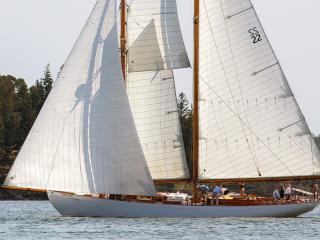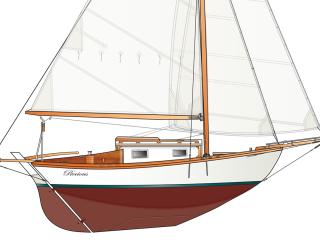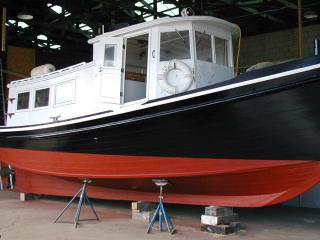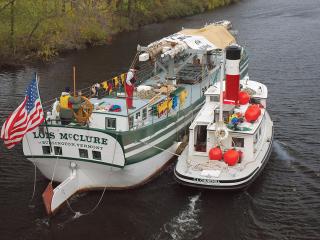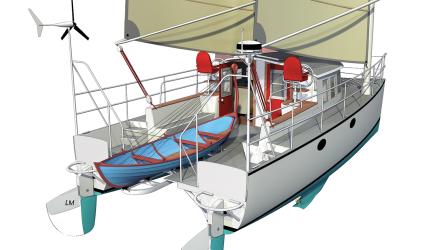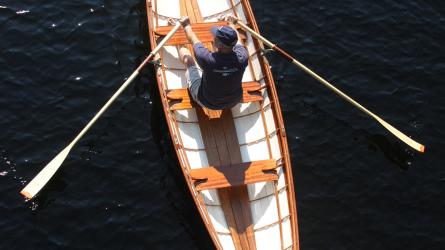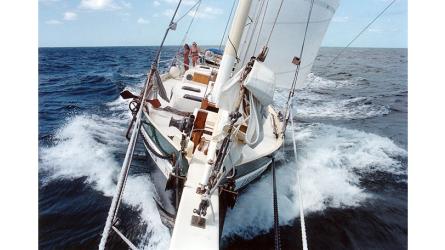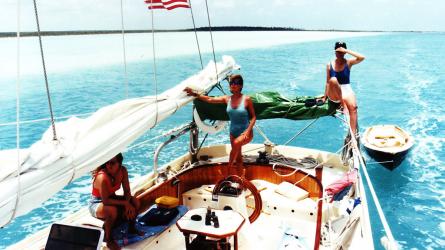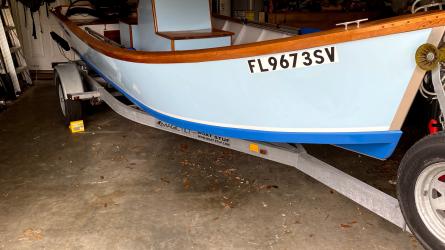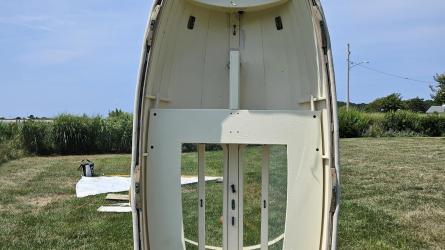November / December 2025
A Legacy Endures
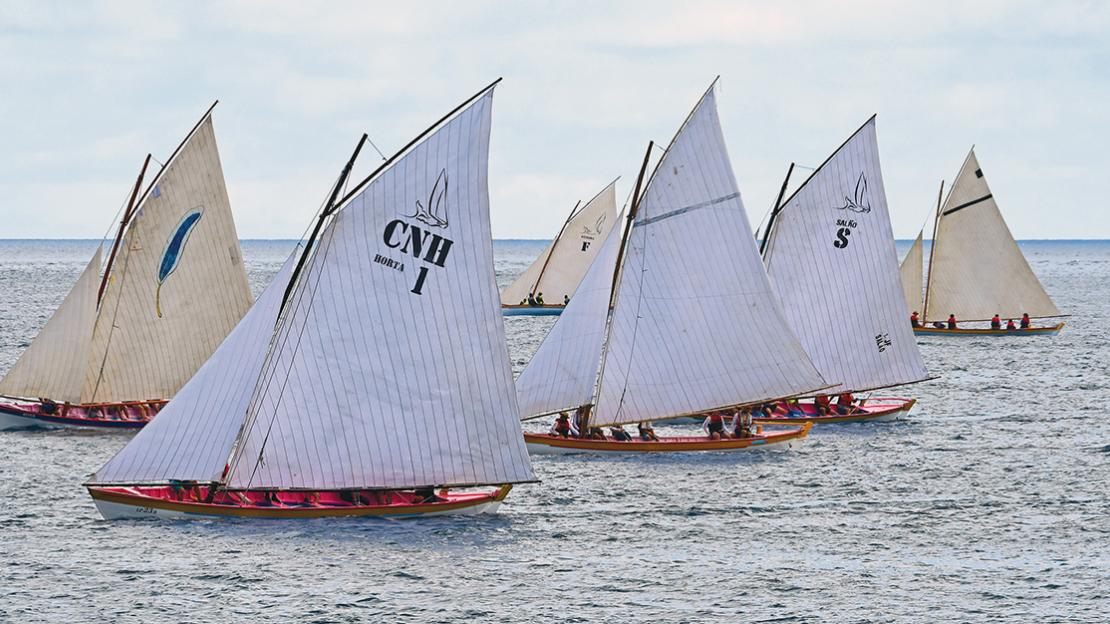
JOSÉ MACEDO
Azorean whaleboats celebrate the maritime heritage of the Portuguese islands, and racing under sail or oars is common during events such as Sea Week 2025, which was held August 9 in Horta, Faial Island.
The scene was still common in the very early 20th century: 1905 photographs show the MORNING STAR, a brig employed as a whaler, docked at New Bedford, Massachusetts, after two years at sea. Its small fleet of double-ended whaleboats, normally on deck or slung from davits along the ship’s sides, were brought dockside and tied together, presumably for maintenance after hard use at sea. Barrels of whale oil, still valuable as a high-quality lubricant despite competition from land-based petroleum, were lowered to the pier to await transport to a refiner nearby. Tourists visited the ship; some bought scrimshaw and other souvenirs from the Portuguese crew; others snapped pictures with their Kodak box cameras.
A century and a quarter later, the faded pictures give us a glimpse of various technologies—sailing a square-rigged ship to pursue whales on distant seas, building wooden whaleboats, and manning these boats at sea in one of the world’s most dangerous fisheries—that made 19th- and early-20th-century whaling profitable enough to persist until the whales were nearly gone.
This traditional whale fishery and its associated technologies died out around much of the world during the 20th century as more efficient methods—fossil-fuel-driven steam power, exploding harpoons, and the like—made it possible to kill more whales in less time with less risk to the humans who sought them, all while the demand for whale oil decreased.
An exception was the Azores, the Portuguese archipelago in the eastern North Atlantic whose surrounding waters were home to the sperm whales long favored by the New Bedford ships. As the rest of the whaling world was mechanizing in the 20th century, communities in the Azores continued whaling the old way, from small boats like those tied alongside the MORNING STAR and other sailing vessels at the New Bedford docks in 1905.
To read the rest of this article:
Click the button below to log into your Digital Issue Access account.
No digital access? Subscribe or upgrade to a WoodenBoat Digital Subscription and finish reading this article as well as every article we have published for the past 50-years.
ACCESS TO EXPERIENCE
2-for-1 Print & Digital Subscription Offer
For this holiday season, WoodenBoat is offering our best buy one, get one deal ever. Subscribe with a print & digital subscription for $42.95, and we’ll give you a FREE GIFT SUBSCRIPTION to share with someone special.
1 YEAR SUBSCRIPTION (6 ISSUES)
PLUS ACCESS TO MORE THAN 300 DIGITAL BACK ISSUES
PRINT+DIGITAL $42.95
Subscribe
To read articles from previous issues, you can purchase the issue at The WoodenBoat Store link below.
 Purchase this issue from
Purchase this issue from
